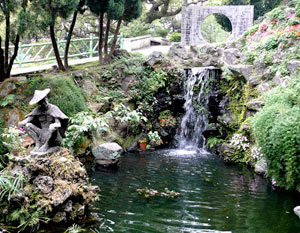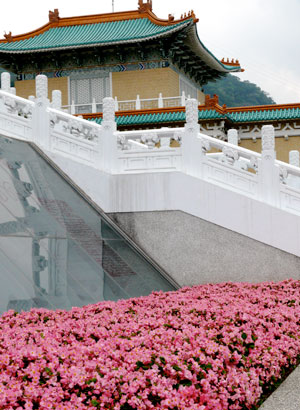TAIPEI, TAIWAN — All we ever seem to hear about this “treasured island” caught between two countries and two cultures is political strife.
Politics, it appears, is the national sport here.
But Taiwan is much more than politics.
In fact, this amazing nation that has been significantly influenced by both the Chinese and Japanese cultures and formed by earthquakes and volcanoes may be the most beautiful island in Asia.
And, I discovered, you don’t have to venture too far outside its charming mountain-ringed capital, Taipei, to see some of its most beautiful features.
The entire country, made up of 14 different islands, is separated from the Chinese mainland by the Taiwan Strait and Japan by the East China Sea and covers about 36,000 square kilometers. It’s also easy to get around thanks to the country’s super sleek new bullet trains.
Or, you can just hail a cab.
Cabs are so cheap in Taiwan that even a full day of touring – six hours covering over 150 kilometres with stops for lunch and sightseeing while the meter was kept running - cost me just $80 U.S. And, as it turned out, the cabbie was a wonderful guide and a fountain of information about his country.
I climbed in the back of Mr. Wang’s taxi early one morning outside the Grand Hyatt Hotel and we headed out on a sightseeing tour that would include a coastal drive to a former Japanese village called Jiu Fen. Along the way we would see national parks, waterfalls, rain forests, dramatic coastline, lush vegetation, tropical flowers of every kind, an active volcano, quaint villages and a collection of hot springs that, according to cabbie Wang, would soak away every ache and pain I had.
Our first stop was Yang Mia Shan, a national park located atop a mountain just outside Taipei. The drive to Yang Mia Shan took us through Shilin, Taipei’s upscale neighbourhood, and along a winding mountain road, Yangda Blvd., which reminded me a lot of the lovely drive to Hong Kong’s Victoria Peak.


Left: Taipei is surrounded by some beautiful parks. Right: The national museum is loaded with Chinese treasures.
In fact, there are a lot of similarities between Taipei and Hong Kong.
According to the likeable Mr. Wang, “Taipei is really Hong Kong on valium.”
The people here defiantly take a laid-back approach to life.
The earliest Chinese settlers referred to Taiwan as the “treasured island” because of its tropical splendour, and while most of the population is Chinese, the Japanese have had a huge cultural influence on this island nation.
Taiwan’s emphasis on cleanliness stems from the Japanese influence. And, during World War II, Japan used Jiu Fen, which sits high in the mountains overlooking Taiwan’s northern coast, as a strategic defensive position.
“The Japanese did not want to leave our country after the war,” said Mr. Wang. “They loved Taiwan.”
However, the Japanese have been coming back ever since – as tourists.
The entrance to the national park was crammed with buses and cars. The cherry blossom trees were in full bloom and thousands had come to see the annual spectacle. The cabbie dropped me off at the entrance and told me he’d pick me up in a few hours “at the floral clock.”
Yang Mia Shan sits 1,120 metres above sea level and scrub-like trees and clumping grasses make up most of its vegetation. Flowers abound and the air was thick with the scent of cherry blossoms in March, the time I visited. A lovely set of pathways leads visitors to ponds filled with gold fish and statues, manicured gardens and a waterfall that’s almost 200 metres high and is surrounded by lush greenery and Chinese pagodas where people like to sit and meditate.
Mr. Wang was waiting by the floral clock as promised and we continued our drive to Jiu Fen along the Jinshan Highway, a rollercoaster road that cut through a rain forest where the air is always damp with dew.
“Don’t worry, I have travelled this road many times in weather like this,” Mr. Wang reassured me as he wiped away a thick mist from his windscreen.
The mountain air was punched with the strong smell of sulfur coming from the area’s many hot springs and the road leading to the active volcano had been closed because the combination of dew and steam made visibility almost impossible.
“We’ll stop at a roadside restaurant that I know up the road and have some lunch,” said the cabbie as we passed fields of lovely lilies and lots of organic farms. The vegetables grown on those farms were served at the restaurant where we stopped, along with a local chicken dish, and it all cost just a few dollars.
The Jinshan Highway passed through the hot springs town of the same name and then through five mountain tunnels – the longest of which was 1.5 kilometres – before emerging into a seaside paradise of high coastal cliffs and white sandy beaches.
“We are now very close to Jiu Fen,” the cabbie informed me.
Jiu Fen is where a gold mine once stood but now only a gold mine museum remains. Homes built with a distinct Japanese influence and clinging to the rocky cliffs that Jiu Fen is built upon, greeted us as we entered the 150-year-old town that has become a favorurite tourist hangout.
Tea houses offering spectacular views of the surrounding eye candy were bustling with activity and the town’s market, which dominates most of its narrow streets, was crawling with bargain and souvenir hunters.
Mr. Wang suggested I buy the locally made pineapple cake, made fresh daily in one of the town’s many bakeries, to enjoy on our drive back to Taipei, an hour away.
The cake was sweet and satisfying, just like the drive through Taiwan.
About the Author
Marc Atchison is a veteran journalist and a seasoned traveller with more than 20 years of travel writing experience. As the former Travel Editor of the Toronto Star, Canada's largest newspaper, and now Editor-in-Chief and Senior Writer for TraveLife magazine (Canada) and travelife.ca, Marc has been to over 100 countries in the world. Japan is one of his favorite destinations and he's been there on numerous occasions.